The term “hippie” on its own certainly conjures up a lot of different visuals and ideas, but what exactly constitutes a “hippie town”, or a “hippie community”? The meaning can be a bit different for everyone, but for the sake of this article, I wanted to stick with intentional, self-governing communities. True, eclectic enclaves, with a bit of grit to them; as opposed to tourist-filled, party havens. From the desolate California desert to the lush river valleys of Southern Spain, you’re sure to find a city on this list that will pique your interest.
To stay current on everything important happening in the industry, subscribe to The Cannadelics Weekly Newsletter. Also, it’ll get you premium access to deals on cannabis flowers, vapes, edibles, and much more! We’ve also got standout offers on cannabinoids, like HHC-O, Delta 8, Delta 9 THC, Delta-10 THC, THCO, THCV, THCP & HHC, which won’t kill your bank account. Head over to our “Best-of” lists to get these deals, and remember to enjoy responsibly!
Constitutional, Federal, State, and Home Rule Laws
Yes, based on the headline, we have a lot to unpack in this section. When discussing the legality of anything (in the United States anyway), you need to consider constitutional, federal and state laws (we’ll get into home rule laws later on). First and foremost, the United States Constitution is the supreme law of the land, and no federal or state law supersedes it.
Constitutional laws are upheld by the Supreme Court of the United States and are the foundation on which federal laws are based; whereas state laws are based more on the regional preferences of local constituents. Federal laws are enacted by the United States Congress, and must be followed by every state in the nation, as well as US territories like Puerto Rico.
Federal regulations can be a bit broad at times and they don’t always cover all areas of the law, so this is where state regulations come into play. Every state has its own set of laws in addition to federal mandates, as well as a state constitution, which serves as the highest form of legal authority within a state. A state constitution can only add rights, not take way and federal constitutional ones. For example, a handful of states have included the “right to privacy” in their state constitutions, which is not a federal given right.
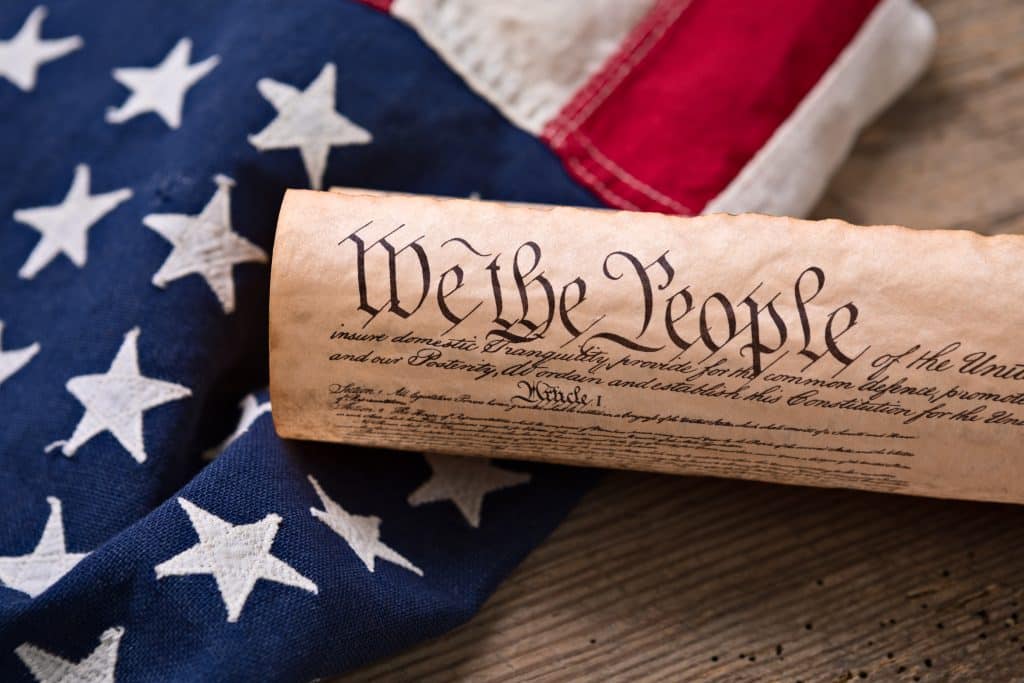
Home rule law goes a step further and gives local governments the power to establish their own regulations and ordinances without obtaining permission from the state. In some cases, home rule laws can work in the benefit of cannabis consumers – like some cities that allow extra leniency for medical patients or people who choose to cultivate at home, for instance.
However, most of the time, home rule laws add more regulations and red tape. This usually plays out in some sort of local ban on cannabis dispensaries. My hometown of Temecula, CA, is one… recreational cannabis is legal in CA, but Temecula has bans on storefront dispensaries within city limits, so only delivery services are allowed. It’s ridiculous, but they are one of many municipalities with these type of ordinances in place.
So normally, it’s relatively cut and dry when it comes to the order of importance: Constitutional law is above federal law, federal laws trumps state law, and home rule laws fill in the blanks where state law lapses. But when it comes to certain issues (like cannabis legalization), we know that those lines become a bit blurred.
Despite the fact the cannabis is still listed as a schedule 1 narcotic, 18 states and Washington D.C. have passed laws allowing for its recreational use, and a total of 37 (including those aforementioned 18) have some type of medical cannabis regulations on the books. Within these states, cannabis businesses seemingly operate like any other industry, but behind the scenes, business owners face unique challenges because of the plant’s federally illegal status. Everything from banking to real estate, to security and insurance can be a problem (often an expensive one) for anyone working in the weed industry.
Slab City, California, United States
Slab City, also called The Slabs and sometimes referred to as “The Last Free Place in America”, is situated in a remote area of the Sonoran Desert in Imperial County, California. It was created when U.S. Marine Corps abandoned Fort Dunlap in 1956, dismantling all the buildings and leaving nothing behind be the concrete slabs underneath.
Shortly after, people began moving in. Although California has complete legal control over the area again (no longer federally owned), it’s remote, unpopulated, and inhospitable, so little regulatory enforcement exists out there. Employees from a chemical company in nearby Niland were the first to inhabit the area post-military. They brought in some small trailers and created a temporary settlement so they wouldn’t have to commute far to work.
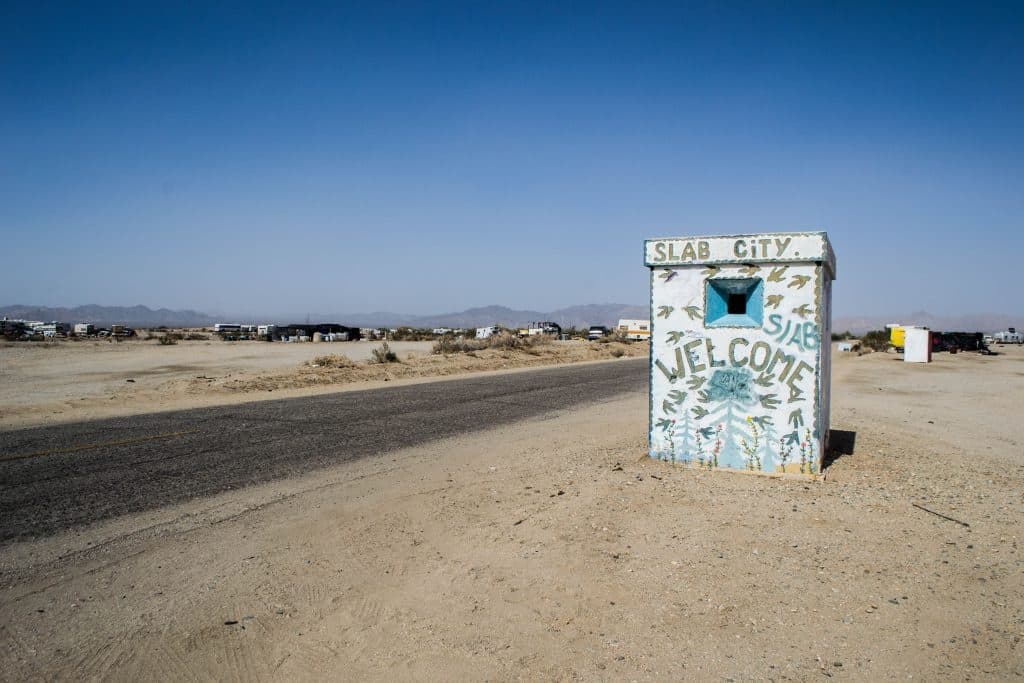
Over the next few decades, a growing number of outsiders began migrating to the slabs. Current residents include artists and creatives, travelers, people looking to live off grid, people with very little income, the occasional snowbirds, and of course, an assortment of drifters. Because Slab City is unincorporated and doesn’t belong to any official municipality, it’s rarely patrolled by law enforcement, but police from Niland will occasionally respond to emergency calls. Otherwise, people police themselves and although some petty crimes like theft do occur, the community will generally shun those who perpetrate such acts. Drug use is also common, but confined to a small area within the community.
Essentially anyone can move to Slab City, but you won’t want to unless you have a bit of grit and self-reliance. The closest amenities – including clean drinking water – are about 5 miles away; which is definitely not walking distance in the blistering summer heat when temperatures can easily surpass 120 degrees Fahrenheit (49 degrees Celsius). There is one communal shower in Slab City that utilizes water from a hot spring in the area. It’s not on the power grid, but many residents have their own solar panels and generators set up. It can be hardcore, even as far as alternative lifestyles go, but it works well for many both longtime and temporary residents of the Slabs.
Manitou Springs, Colorado, United States
Manitou Springs is a city in Colorado that fall under Home Rule Municipality, meaning it’s recognized as a city by the state of Colorado, but they follow their own local ordinances. Overall, their laws closely mirror those of the rest of the state, but over the years the area as gained a reputation as a haven for artists and spiritual types. It is often referred to the “Hippie Mayberry”.
This town of roughly 5,000 people is situated at the base of Pikes Peak, the highest summit of the southern Front Range of the Rocky Mountains, and is known for its many natural mineral springs. During the seasonal migration period, the Ute and Great Plains tribes would follow the herds to the springs, which they believed were a medicinal gift from the Great Spirit Manitou.
In 1872 the town’s modern history began, when General William Jackson Palmer and Dr. William Abraham Bell arrived in Manitou Springs and attempted to designate it a sprawling, scenic health resort. Manitou Springs was officially incorporated in 1876. Bell’s home, known as Briarhurst Manor, is now a fine dining restaurant that is open to the public and listed on the city’s National Register of Historic places. According to the Colorado Tourism Office page, “Manitou Springs has been the quintessential tourist town since the 1870s, when visitors discovered the healing waters the Ute Indians had been drinking for years. Many of the town’s mineral springs still function today and the water is free.”
Christiania, Copenhagen, Denmark
Freetown Christiania is a small intentional community about 84-acres large on the outskirts of Denmark’s capital, Copenhagen. It was established in 1971 when a group of artists and squatters took over an abandoned military base outside of city limits. Because of some type of legal zoning issue, the group was able to label Christiania a “free town”, unaffected by standard Danish law.
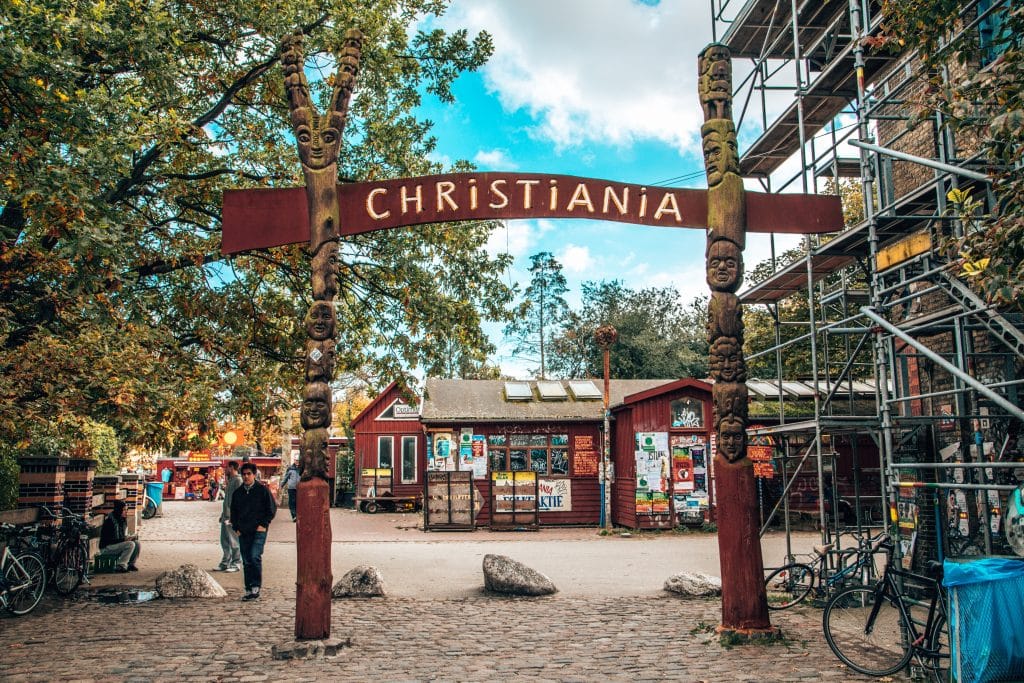
Between 1972 and 1989 there was a lot of debate on whether Christiania had a right to exist this way, but in 1989, nearly two decades after its inception, the Danish government voted unanimously to allow Christiania to continue to function as a separate enclave. Fast forward to 2013, and another legislation was passed that revoked and special status related to Christiania, and thus, Denmark reclaimed ownership over the area. However, there was an amendment in the law that allowed for current residents of Christiania to take control over their own parcels – going from squatters to property owners.
Despite some gentrification over the decades, Christiania maintains its uniqueness, as well as its independence. To this day, the area has an eccentric flare and residents have gone so far as to create their own flag, currency, and a sign at the entrance of town that reads “You Are Now Leaving the European Union”. Additionally, cars are outlawed in the streets, so residents and tourists can either walk or bicycle through the community.
All this lack of government oversight has led to a thriving drug trade that permeates the downtown Pusher Street area. Police still turn a blind eye to cannabis deals and certain other substances, but the community does not support the use of harder drugs like methamphetamine and heroin. As a matter of fact, residents banned such drugs themselves back in the 1970s, have and done well self-policing in that regard.
Beneficio, Spain
Beneficio is an intentional, commune-style community founded over 30 years ago and located in a river valley outside of the Alpujarras village in Southern Spain. Over 400 people live there (about half of them permanently) in various types of light shelters like tents, tipis, benders, and yurts; and some people live in vehicles and trailers along the roadside leading into the community. Residents and vistors come from all over the world including the United States, China, Australia, South America, and numerous European countries.
Inside Beneficio, there are numerous small businesses and permanent structures including a grocery store, bakeries, free range eggs and cheese making, an outdoor kitchen, composting toilets, a library with hundreds of books in dozens of languages, a sports pitch, a large communal tipi with some shared amenities and daily activities like yoga, drum circles, and workshops, and even a small school with donated books and supplies for the children who reside in Beneficio. The main source of drinking water is a mountain spring, with a stream that runs through the valley serving as a secondary source.
Geographically, the area Beneficio covers is quite large. It’s a very laid-back place, but as you can tell just based on the number of resources, there is a level of structure and organization to the community. Either way, it’s known to be friendly and welcoming, and just about anyone can stop by, strike up a conversation with one of the locals, and get more intimately familiar with the ins and outs of Beneficio.
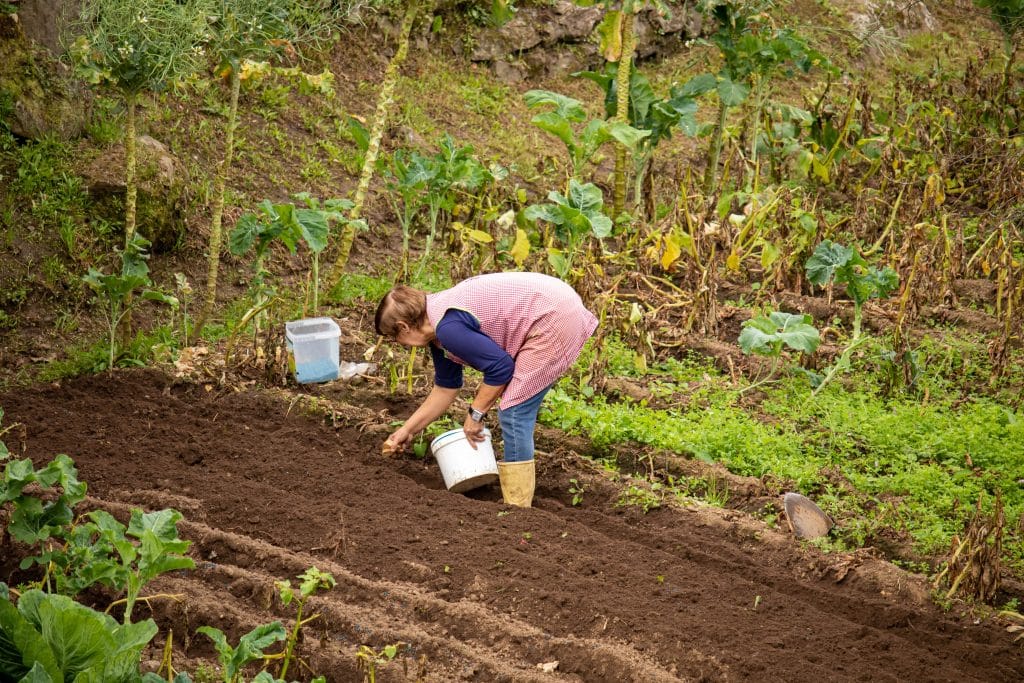
Nimbin, Australia
Nimbin is a small town positioned in the middle of a valley of volcanic rock in northern New South Wales, Australia. The current population is around 2,200, and the vibe and size are both somewhat comparable to Glastonbury in the UK. There is a main “high street” that consists of a slew of touristy shops selling handmade products, artwork, smoking paraphernalia, and in some cases, other types of contraband – although this is at the owner’s discretion of course.
Historically, Nimbin was a small, dairy farming village. But in the summer of 1972, that all changed after the area hosted the Aquarius counter-culture festival. A group of students from Sydney University concluded that Nimbin was the perfect place to host the festival, but after the event was over, people loved the area so much they decided to stay, indefinitely.
After some time, new communities based on similar ideals of “freedom and solidarity” began to emerge within Nimbin and eventually the town earned a reputation as a haven for people wanting to live a more independent and alternative lifestyle. In addition to their overall shared vision of a free and self-sufficient way of life, Nimbin is known for environmental activism, and since the mid-seventies has been at the forefront of numerous protests to help protect the earth, both in Australia and globally.
Final Thoughts
The communities on this list range from the hot and unforgiving terrain of the Sonoran Desert, to temperate mountain regions fed by natural streams and springs, and everything in between. What’s really noteworthy to me, is how these communities stand the test of time, and act as a sort of social experiment if you will. It goes to show that people generally do a pretty good job of governing themselves, and communities tend to shun misbehavior and create safe environments with or without government overregulation.
Hello readers! We appreciate you joining us at Cannadelics.com, a top choice news platform for independent coverage of the growing cannabis and psychedelics landscapes of today. Come by the site whenever possible for updates on current and world-changing events, and head over to the Cannadelics Weekly Newsletter, so you’re always up on what’s going down.


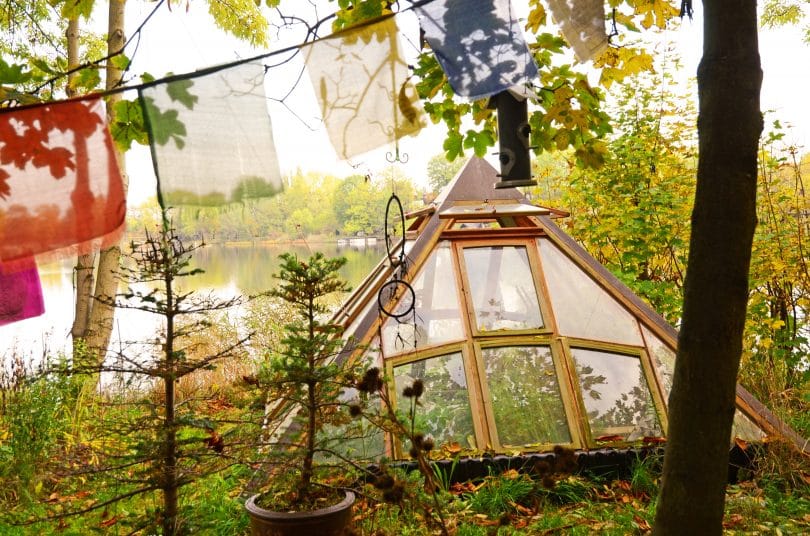







Hi Alexandra. I see you did not mention The Farm in Summertown Tennessee?